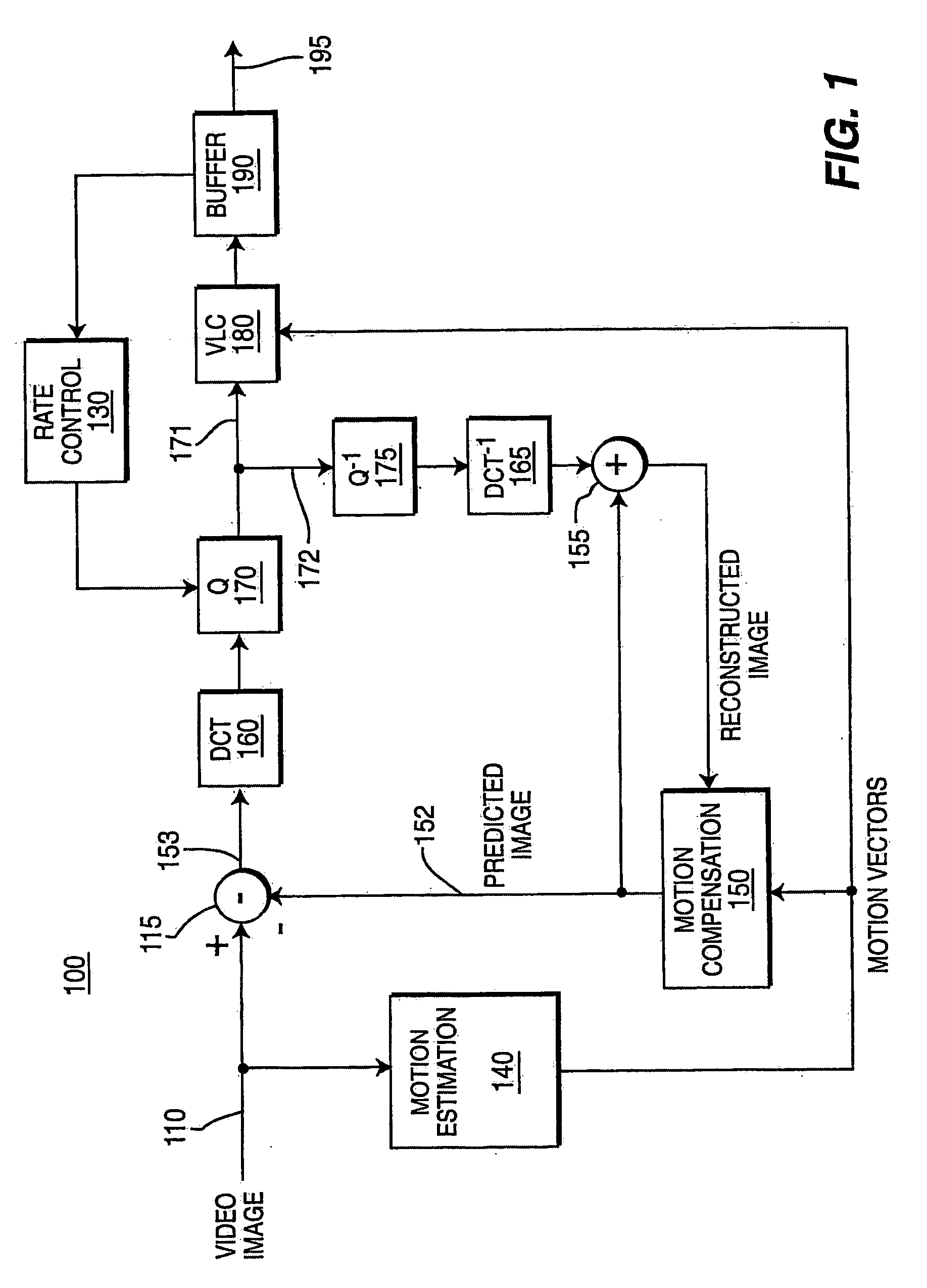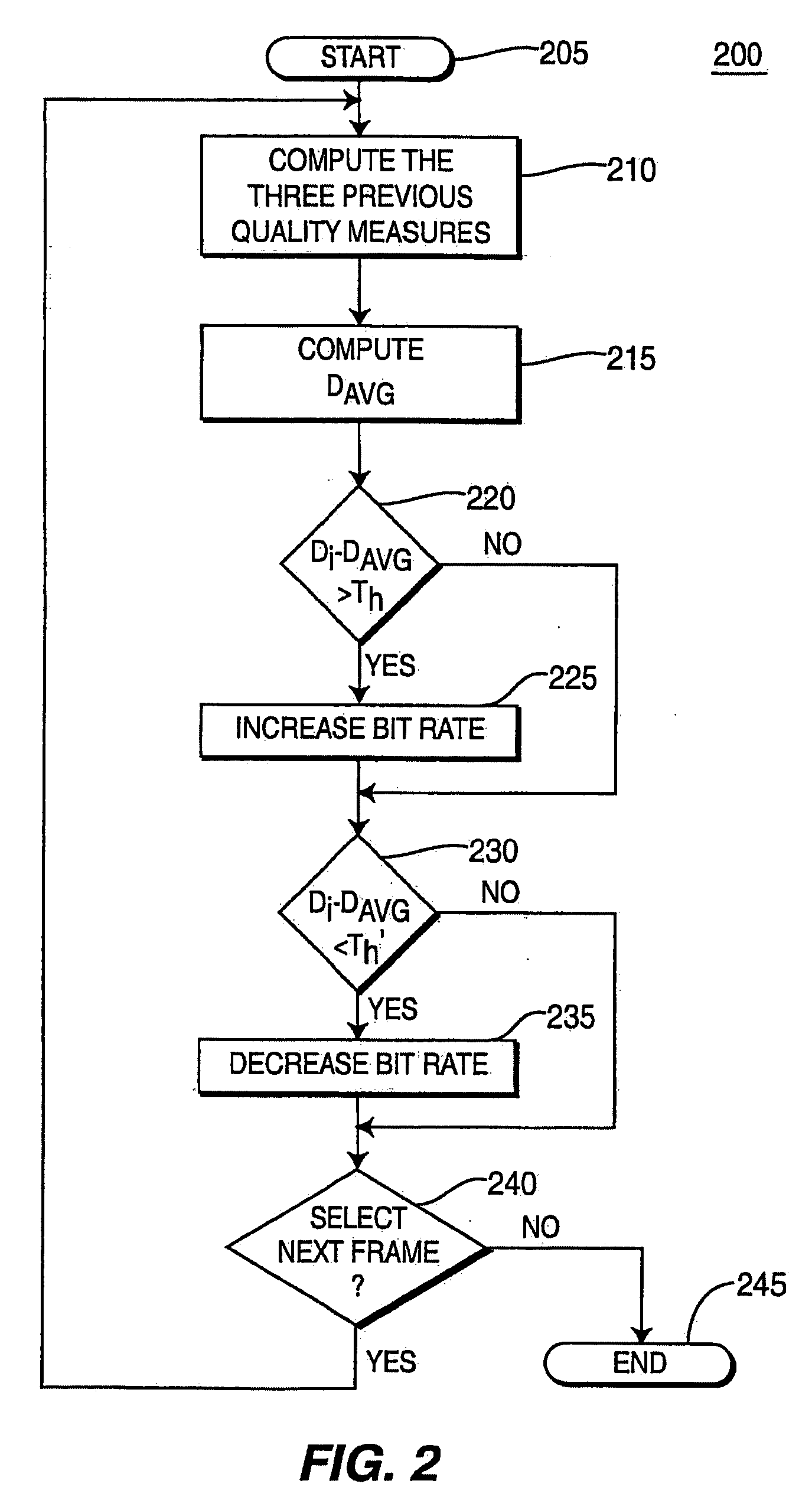Apparatus and method for allocating bits temporaly between frames in a coding system
a technology of coding system and apparatus, applied in the field of apparatus and method for allocating bits, can solve the problems of affecting the distortion of input video image, reducing the high cost of video compression codec (coder/decoder) and resolving the inter-operability of equipment, and affecting so as to achieve the effect of reducing the visual quality of video image, poor rate control process, and reducing the cost of video compression cod
- Summary
- Abstract
- Description
- Claims
- Application Information
AI Technical Summary
Benefits of technology
Problems solved by technology
Method used
Image
Examples
Embodiment Construction
[0018]FIG. 1 depicts a block diagram of the apparatus 100 of the present invention for using a picture quality or distortion measure to temporally allocate bits in an encoding system. In the preferred embodiment of the present invention, the apparatus 100 is an encoder or a portion of a more complex block-based motion compensation coding system. The apparatus 100 comprises a motion estimation module 140, a motion compensation module 150, a rate control module 130, a DCT module 160, a quantization (O) module 170, a variable length coding (VLC) module 180, a buffer 190, an inverse quantization (Q−1) module 175, an inverse DCT (DCT1) transform module 165, a subtractor 115 and a summer 155. Although the apparatus 100 comprises a plurality of modules, those skilled in the art will realize that the functions performed by the various modules are not required to be isolated into separate modules as shown in FIG. 1. For example, the set of modules comprising the motion compensation module 15...
PUM
 Login to View More
Login to View More Abstract
Description
Claims
Application Information
 Login to View More
Login to View More - R&D
- Intellectual Property
- Life Sciences
- Materials
- Tech Scout
- Unparalleled Data Quality
- Higher Quality Content
- 60% Fewer Hallucinations
Browse by: Latest US Patents, China's latest patents, Technical Efficacy Thesaurus, Application Domain, Technology Topic, Popular Technical Reports.
© 2025 PatSnap. All rights reserved.Legal|Privacy policy|Modern Slavery Act Transparency Statement|Sitemap|About US| Contact US: help@patsnap.com



